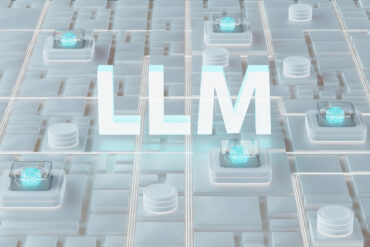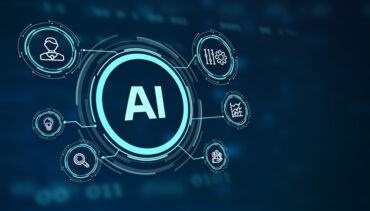
As society moves more and more of its services online, healthcare must be prepared to develop private, secure, and consumer-friendly digital ID strategies so we can join the revolution.
The result of the Covid-19 pandemic has amplified the need for virtual, contact-less healthcare interactions. Many patients over the past year and a half have conducted doctor’s appointments over Zoom, received test results via email, or had to wait in the car before seeing their physician. All the more need for digital identities.
As the restrictions of Covid-19 forced the industry to deliver care at a distance, healthcare quickly pivoted to embrace tech-driven strategies to improve efficiencies while keeping individuals safe. The rise of telehealth, patient portals, and other remove care interactions exploded.
Now the industry must build upon the innovations of the pandemic to institute a digital-first healthcare environment that delivers better patient experiences while protecting and verifying consumer identities.
The number of medical errors that occur annually across the U.S. healthcare system is staggering and demands that the industry engage more comprehensive approaches to eradicating patient misidentification. Healthcare delivery organizations need unprecedented clarity and consistency into one’s medical records to improve clinical, administrative, and operational performance. This is critically important as consumer expectations evolve and care providers become more dependent on federal initiatives such as population health and value-based care—all of which rely on accurate, easily accessible data quality.
Despite the heightened privacy and security concerns of healthcare, there are enormous opportunities to better integrate our unique digital identities into the healthcare process.
By learning from the successes of other verticles, we can create a safe, secure, digitally-driven future for patients, payers, and providers.
See also: Blockchain Could Play a Pivotal Role in Vaccine Verification
What is a digital identity?
There is no universal standard definition of the term “digital identity.” In the broadest terms, an individual’s digital ID is any set of data attributes that can be reliably associated with that person. These attributes may include consumer and behavioral data, criminal records, health records, web histories, email accounts, employment and education histories, and more.
A digital ID tends to incorporate some aspect of a person’s legal identity, such as a digital driver’s license, identification number, or e-passport. These digital IDs tend to focus on uniquely identifying attributes of an individual, such as their legal name, date of birth, gender, and physical address.
Digital identities can be used as online access mechanisms by employing multifactor authentication, certificates, and keys, and even blockchain to provide robust security while granting authorization to approved individuals to conduct tasks or access services.
Unique, verified digital IDs have many benefits. They are largely trustworthy yet can be authenticated remotely, making many transactions faster and simpler.
Ideally, they will be highly interoperable with other secure digital systems, preventing the need for repeated reauthentication across tasks. And by moving critical ID systems online, we can help close access gaps in underserved communities where it’s easier to get a smartphone than a new copy of a birth certificate.
How are unique digital identities influencing countries around the world?
Lawmakers and consumers in the United States have been very hesitant to explore digital identification, particularly in the realm of healthcare. After decades of banning funding for a national patient identification number (NPI), Congress only recently took the first steps toward allowing healthcare stakeholders to develop an NPI strategy.
Nearly 70 other countries around the world use similar national eID cards, including Germany, China, the Philippines, Cyprus, South Africa, and Nigeria. Other countries are exploring e-passports, while a few US states are even piloting digital driver’s licenses.
India is also making a push into a digital health ID that aggregates records and streamlines access to care by mirroring many of the same principles as Aadhaar. As Indian authorities face privacy concerns and low uptake, however, they may want to look to the tiny, Baltic nation of Estonia about how to succeed.
In 2016, Estonia made waves in the health technology world by integrating blockchain into its national digital patient health record system to provide extra security for tracking and verifying the integrity of its data.
The project further supports Estonia’s ranking close to the top of the UN’s E-Government Development Index. A whopping 99 percent of government services are available online 24/7. The Estonian e-residency program allows residents to conveniently and securely obtain a digital ID card from wherever they are and to gain access to all of the e-services available.
Making the case for a future of digital IDs in American healthcare
Other countries have very different experiences with healthcare and its data integrity challenges. But we can certainly learn from those two countries – and the dozens of other governments blazing trails in digital identity management – about the benefits of going digital in our fragmented, unreliable system.
Unique identifiers, backed by blockchain or other sophisticated verification tools, can zero out our unacceptably high rates of patient matching errors and duplicate records, which often result in clinical mistakes and poor patient experiences. With trustworthy digital identities, we have a chance to crank our patient identification accuracy up to 100 percent.
In addition, consumers could take a more empowered role in decision-making. They could view and share their records as they wish or access verified online directories to easily identify and connect with high-quality providers who have proven performance records, thereby slashing unnecessary spending and improving patient safety and outcomes.
Critically, patients would maintain control over their own digital identity and how their data is used. With secure apps for conducting interactions, sharing data, and providing consent, patients could unlock an entirely new range of healthcare tools from their smartphone without having to dig through a purse for yet another insurance card.
These types of interactions are happening around the world today as governments and consumers adopt digital identity management tools. It’s possible to bring the same experiences to healthcare in the US very soon.
Unique digital identities are the next step for the healthcare industry. As society moves more and more of its services online, healthcare must be prepared to develop private, secure, and consumer-friendly digital ID strategies so we can join the revolution.




























